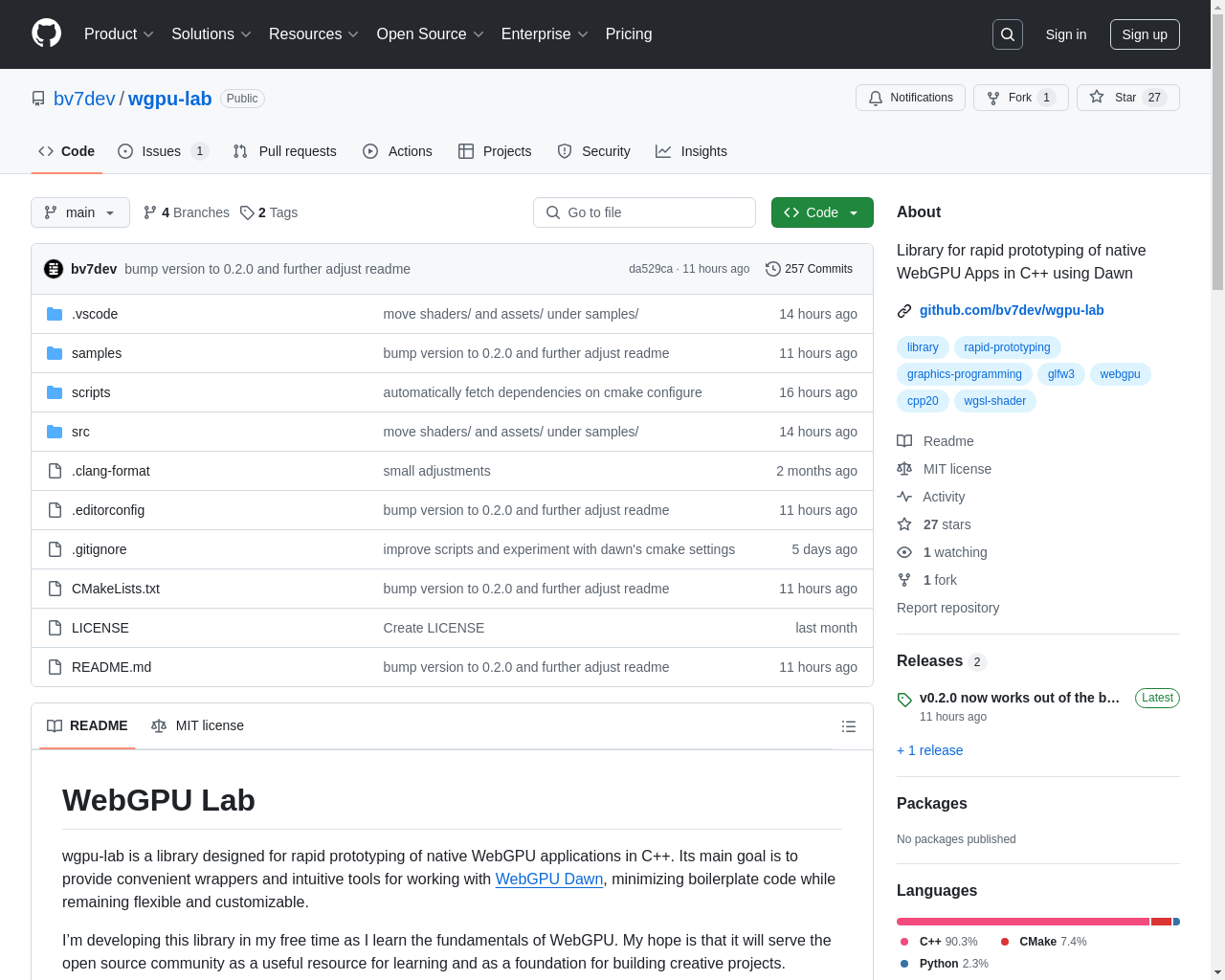

Highlight 1
The improved build process makes it significantly easier for developers to set up and start building WebGPU applications compared to earlier versions.
Highlight 2
The open-source nature encourages collaboration and contributions from the community, fostering a rich ecosystem for enhancements.
Highlight 3
Being based on Google's Dawn implementation provides a strong foundation, ensuring that developers are using a well-supported and robust technology.

Improvement 1
Enhanced documentation is needed to cover advanced features and provide more examples for developers at varying skill levels.
Improvement 2
A dedicated community support forum would help users share knowledge and troubleshoot issues faster.
Improvement 3
The library could benefit from additional tutorials or getting started guides, specifically tailored for developers new to WebGPU.
Product Functionality
Consider implementing a versioning system to track changes and updates more effectively, helping users understand the evolution of the library.
UI & UX
Improving the website's navigation and structure would make it easier for users to find relevant documentation and examples quickly.
SEO or Marketing
Focusing on creating engaging blog posts or tutorials that showcase use cases for wgpu-lab could increase visibility and attract more developers.
MultiLanguage Support
Adding multi-language support for documentation would broaden the library’s accessibility to non-English speaking developers.
- 1
What is wgpu-lab used for?
wgpu-lab is a library for developing WebGPU applications in C++, enabling developers to leverage modern graphics hardware efficiently.
- 2
Is wgpu-lab open-source?
Yes, wgpu-lab is open-source and welcomes contributions from the community to enhance its capabilities.
- 3
How can I contribute to wgpu-lab?
You can contribute by submitting code improvements, opening issues, or sharing your experiences using the library on the GitHub repository.
